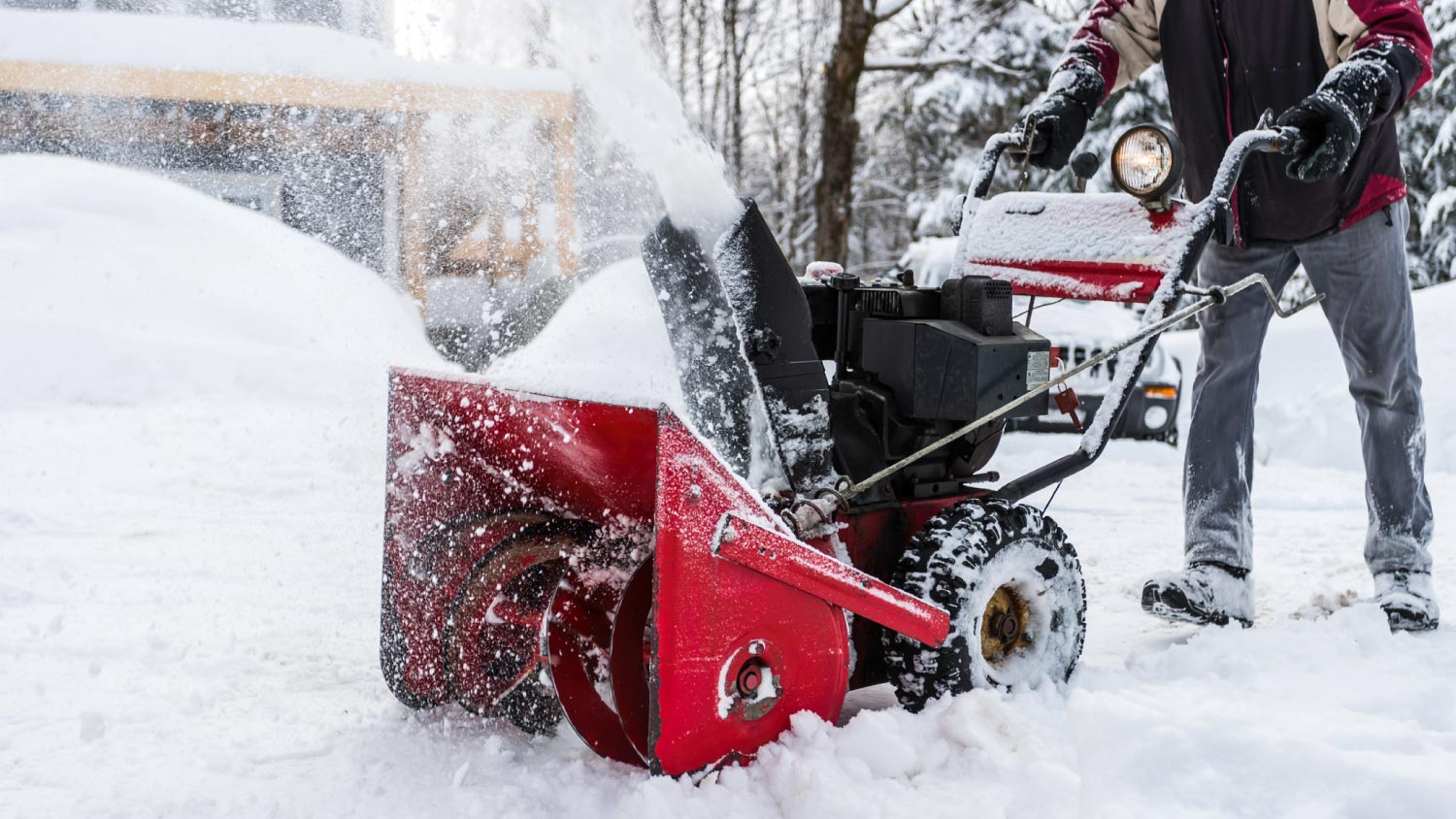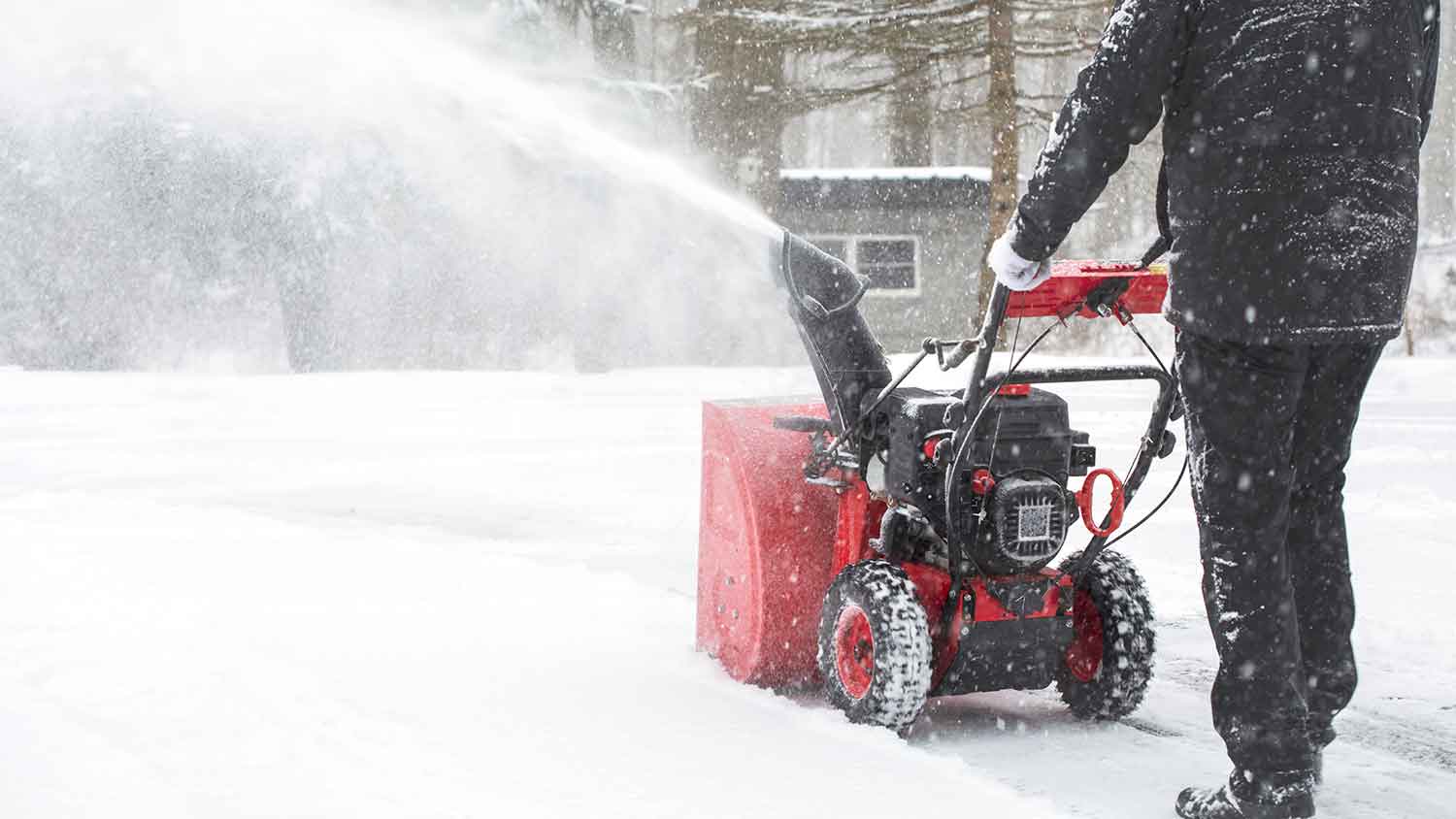
Get the latest snow removal cost estimates, including average prices, key cost factors, and tips to help homeowners budget for safe, efficient snow removal.
Take the guesswork out of getting the right size snow blower


Snow blowers come in various sizes and types, ranging from single-stage to three-stage.
Consider factors like size of area, type of terrain, and type of snow when choosing a snow blower size.
The average amount of snowfall your area receives determines the size of snow blower you need.
Winter is approaching rapidly, and the last thing you want to do is wait for snowflakes to fall before buying a snow blower. Determining what size snow blower will work best for your needs will make clearing your sidewalks, driveway, and other areas a breeze. Learn the difference in various types of snow blowers, how to determine which size you need, and factors to consider to make your decision. Don’t forget to consider hiring a professional snow removal service instead of investing in a snow blower.
Since a snow blower isn't a one-size-fits-all machine, there isn't one standard size. There are one-stage, two-stage, and three-stage snow blowers, and they come in a variety of sizes and clearing widths. The engine sizes can range from 200 to over 400 cubic centimeters, depending on the model. Clearing width sizes vary between 18 to 38 inches.

Needless to say, it can be overwhelming to figure out what size snow blower is best. Remember that engine, intake, and clearing width sizes can vary depending on the specific type, model, and brand.
Here is a breakdown of each type and how to determine which size you need.
| Type of snow blower | Average Intake Height | Standard Size Clearing Width |
|---|---|---|
| Single-Stage | 13 inches or less | 18–22 inches |
| Two-Stage | 20-23 inches | 20–38 inches |
| Three-Stage | 21-24 inches | 24–34 inches |
Single-stage snow blowers are smaller and lighter than two- or three-stage snow blowers. Since they are smaller in size, they are easier to maneuver. They operate by scooping, cutting, and throwing snow in a single motion—hence the name “single-stage.” A single-stage blower can be battery, electric, or gas-powered.
This type of snow blower can handle light to moderate snow of depths between 8 to 12 inches or less and have a clearing width of 18 to 22 inches. Single-stage blowers are best for clearing snow from smooth surfaces such as patios, walkways, and driveways. So, if you live in an area with lower snowfall and smaller areas to clear, this may be the right size snow blower for you.
If you live in an area with frequent deep snowfall, a single-stage snow blower isn’t going to cut it. Two-stage snow blowers are made to remove wet, heavy, and deeper amounts of snow. They clear snow by using a “two-stage” process, where an auger collects and cuts the snow, pushes it into the center of the machine to the impeller, and then discharges it out of the chute.
These heavy-duty machines can handle snow depths of between 16 and 23 inches. The standard clearing width ranges from 20 to 38 inches, so they’re suited for large areas with significant amounts of snow. They are also durable and can maneuver through uneven and rough terrain. A two-stage snow blower is ideal for clearing long gravel or paved driveways, patios, and other areas that need snow removal.
These heavy-duty snow blowers are designed to clear wet, dense, and deep snow. This large piece of snow removal equipment can clear up to 23 inches of snow, but they do the job much quicker than a two-stage snow blower. In fact, they can remove snow up to 50% faster than their counterparts. This type of snow blower can remove snow much quicker because in addition to having augers and impellers, they also feature an accelerator, which speeds up the process.
They have a clearing width of 24 to 30 inches or more, but can vary by brand and model. So, these machines are best for people or business owners who live in areas that regularly have deep and frequent snowfall. They are also commonly used for commercial purposes because of their ability to clear large volumes of snow quickly.
Now that you know the different sizes and types of snow blowers, how do you know what size snow blower is best for you? Here are the main factors that will influence the snow blower size you need.
The main determining factor when figuring out what size snow blower you need is the amount of snowfall your area gets each winter. For example, if you live in an area with frequent heavy snowfall, you should consider buying a two-stage snow blower to tackle the job.
A three-stage snow blower is for people who get significant amounts of snow and need to clear large areas, such as parking lots. However, if you live in a climate that tends to get lower amounts of snowfall, a single-stage snow blower will likely suffice.

Another important thing to consider is the type of snow you frequently get in your area. For instance, a single-stage snow blower is better at clearing lighter snow than heavy, wet snow, while a two-stage and three-stage snow blower can handle wet, heavy, and icy snow. Again, a three-stage snow blower is a more powerful machine and can remove most types of snow faster and throw it farther than the others.
The size of the area will also determine what size snow blower you need. Single-stage snow blowers are lighter and easier to maneuver, so they are best for clearing smaller areas, such as short walkways and driveways. Two-stage snow blowers are made to remove snow from midsize to large areas, such as patios and long driveways.
Now, a three-stage snow blower is optimal for large areas, such as wide driveways and commercial-sized parking lots. Before making your purchase, measure the size of your sidewalk and driveway, so you know what clearing width will work best for you.
Last but not least, you need to consider the type of terrain that you need to clear. Two-stage and three-stage snow blowers can be used on paved and unpaved surfaces and handle tougher terrain, including inclines and uneven surfaces.
Single-stage snow blowers are designed for use on smooth, flat surfaces. So, if you have a gravel driveway, then you should skip a single-stage and opt for a different type of snow blower.
Have you already purchased a snow blower, but it’s not the right size? If you only used it once or twice, you may be able to return it and get the type and size that works better for your needs. Of course, it depends on the retailer’s return policy, but you may want to check into it if it’s within a reasonable timeframe.
You could also sell it and use that money toward purchasing a new one. After all, a snow blower beats out having to shovel it if you deal with frequent snowfall. It’s best to speak with a professional at the retailer you are purchasing from to determine which size suits your needs to ensure you don’t purchase the wrong one again.
You can also skip buying a snow blower and opt for hiring a snow removal service near you instead. This can be a great option if you have physical limitations that make manual snow removal too risky. It saves you from being out in the bitter cold and frees you up for more fun winter activities, too.
From average costs to expert advice, get all the answers you need to get your job done.

Get the latest snow removal cost estimates, including average prices, key cost factors, and tips to help homeowners budget for safe, efficient snow removal.

Discover the cost to install snow guards. Learn about average prices, key cost factors, and tips to save on your snow guard installation project.

If your winters pile on the snow, you need the right tool for the job. Here are all the types of snow removal equipment at your disposal, from handheld to high-tech options.

Knowing what to put on an icy sidewalk is just part of the battle when the temperature drops. Here are more tips for an ice-free walk.

Snow blowers and power brushes are effective for different applications. Find out the key differences and benefits of a snow blower vs. power brush.

Deciding between a gas snow blower vs electric? Weigh all of the pros and cons with this informative guide before you buy.